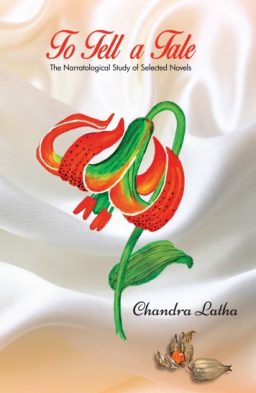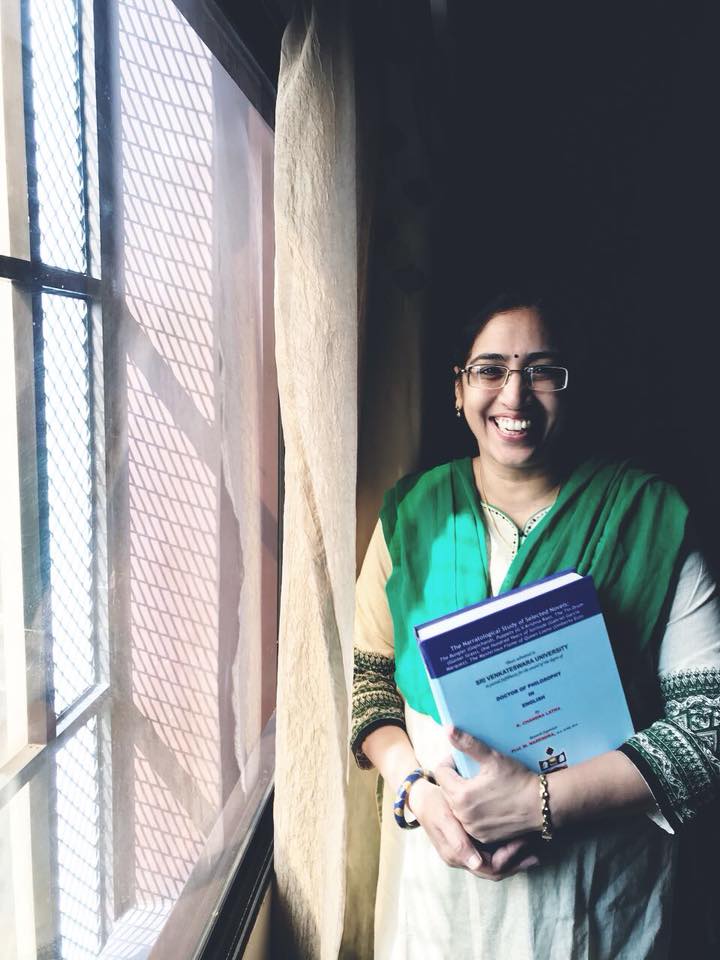
To tell a tale-27
(Chapter-7 Part-4)
-Chandra Latha
In the thesis, the distinctive narrative styles of the selected novels written in the native languages of the novelists, namely Telugu, German, Spanish and Italian, are presented in the order of their publication in their original language, between 1946 to 2004, approximately covering a half-century. All these novels are rooted in world wars. The novelists were born and grew up and survived during the world wars. They are: Gopichand (1910), GV Krishna Rao (1914), Gunter Grass (1927), Gabriel Garcia Marquez (1927) and Umberto Eco (1932). The novels were first published in the respective original languages: The Bungler (Telugu, 1947), Puppets (Telugu, 1951), The Tin Drum (German, 1959), One Hundred years of Solitude (Spanish, 1967) and The Mysterious Flame of Queen Loana (Italian, 2004). And, the English translations appeared in a different order: The Bungler (2003), Puppets (1997), The Tin Drum (1961), One Hundred Years of Solitude (1970) and The Mysterious Flame of Queen Loana (2005). Telugu novels in English translation could hardly reach the Indian readers but, the other three novels were immediate international best sellers and still they continue to be in the top of the best sellers list. The Tin Drum is made into film in 1979 and won Academy award for best foreign Language film.
Interestingly, the texts of all these novels primarily represent the period from 1920 to 1950’s. However, at times, in the pursuance of the theme, the time frame of the story moves as early as history could record and the myth can unfold .For example, the narrative moves all over one hundred years without any fixed time frames in the novel, One hundred years of Solitude. The time of the text, the time of the author and the time of the reader, play an interesting role in the interpretation of these narratives. The relation between the concept and the context is related to the age of the writer and the age of the narrative, as well.
The chronotope or the space–time continuum forwarded by M.M.Bhakthin, needs a special mention in this context. Both The Bungler and Puppets have linear time frames i.e., the narration moves from the beginning to the end .The Tin Drum and The Mysterious flame of Queen Loana have a typical time structure of present-past-present, where the present and the past exist simultaneously to each other in the narrative.
This understanding of the inseparability of time is brilliantly demonstrated in the novel, One Hundred Years of Solitude which presents a linear and the circular time simultaneously, where the characters move in circular time and repeatedly coming back to the beginning, the linear narrative moves forward. “Melquides had not put events in the order of man’s convenient time, but had concentrated a century of daily episodes in such a way that they coexisted in one instant” (OHYS, Pg.421)
Ursula Iguaran is always the first to understand the infinity in time-space relationship in Macondo. The time in Macondo never strictly categories into past, present and future, they exist simultaneously. The simultaneity of time leads to amnesia, when people forget the past and the prophecies of Melquides is the future time in present and the ghosts of Melquides and Jose Arcadio Buendia show the past in the present. With the prior understanding of the infinity that sustains the time in Macondo with the repetitiveness of generation after the generation from names to personalities, Ursula cares to move forward. This creates a time continuum with the simultaneity of past, present and future. This simultaneity creates several gaps in between the numerous narrative situations that rise, act and erase during the narration.
M.M. Bhaktin’s chronotope, the time-space, addresses the coexistence of text, concept, percept and time in the narrative. Bhakthin includes time as the fourth dimension in the three dimensionality of the life narrated in the novel. Bhakthin discusses the artistically expressed relationship between temporal and spatial time in the novel. He says, “Two adjacent moments, one of biographical life, one of biographical time, are directly conjoined .The gap, the pause, the hiatus that appears between these strictly adjacent biographical moments and in which, as it were, the entire novel is constructed is not contained in the biographical time-sequence, it lies outside geographical time, it changes nothing into the life of the heroes, and introduces nothing into their life. It is precisely an extra-temporal hiatus between two moments of the biographical time. (M.M. Bhakhtin. Forms of time and chronotope in the novel. Pg.89-90)
The extra-temporal time can be understood as the infinity that is magically observed in the novel One hundred years of Solitude or realistically, with in the equation of the context, concept and percept of the author, text and reader with the fourth dimension of time. The gap and the hiatus, that exists between the different frames within the textual narrative, enables the reader to add their time. Thus, the time continuum is completed with the interference of the reader’s interpretation and this is possible where temporal and extra temporal hiatus facilitate the existence of the open text.
M.M.Bhakthin explains the possibilities of narrative openness in relation with chronotope. “A vital function of the novelistic chronotope is to create a sense of open futurity, and along with this, to convey the up-closeness of experience, of time and space in their ordinary dailiness.”(M.M.Bhakthin, Pg.17)
An open text is, thus created and survives beyond the times. The time bound theme evolves by assimilating the different time frames that exist within that extend beyond the texts. This narrative technique is the secret of all the five novels, where the reader from generation to generation could identify with the narrative where he could fill the gaps, the emptiness, with his own narration and in his space-time relationship.
*****
(Contd..)

Chandra Latha, writer from Nellore won Telugu Association of North America award in 1997 for the novel “Regadi vittulu”. Her other novels are Vardhani(1995) and Vallu veellu paarijaataalu (2011). Her short fiction includes nearly 80 stories compiled in nenu nanna navutha (1996),Idam shareeram (2003) and vivarnam(2007). Her non-fiction are (Fish can fly!) ”vacche daretu(2010), itanala kadaku eeboothi boTlu(2010). And also published her blogposts in a book madata pejee(2010).
